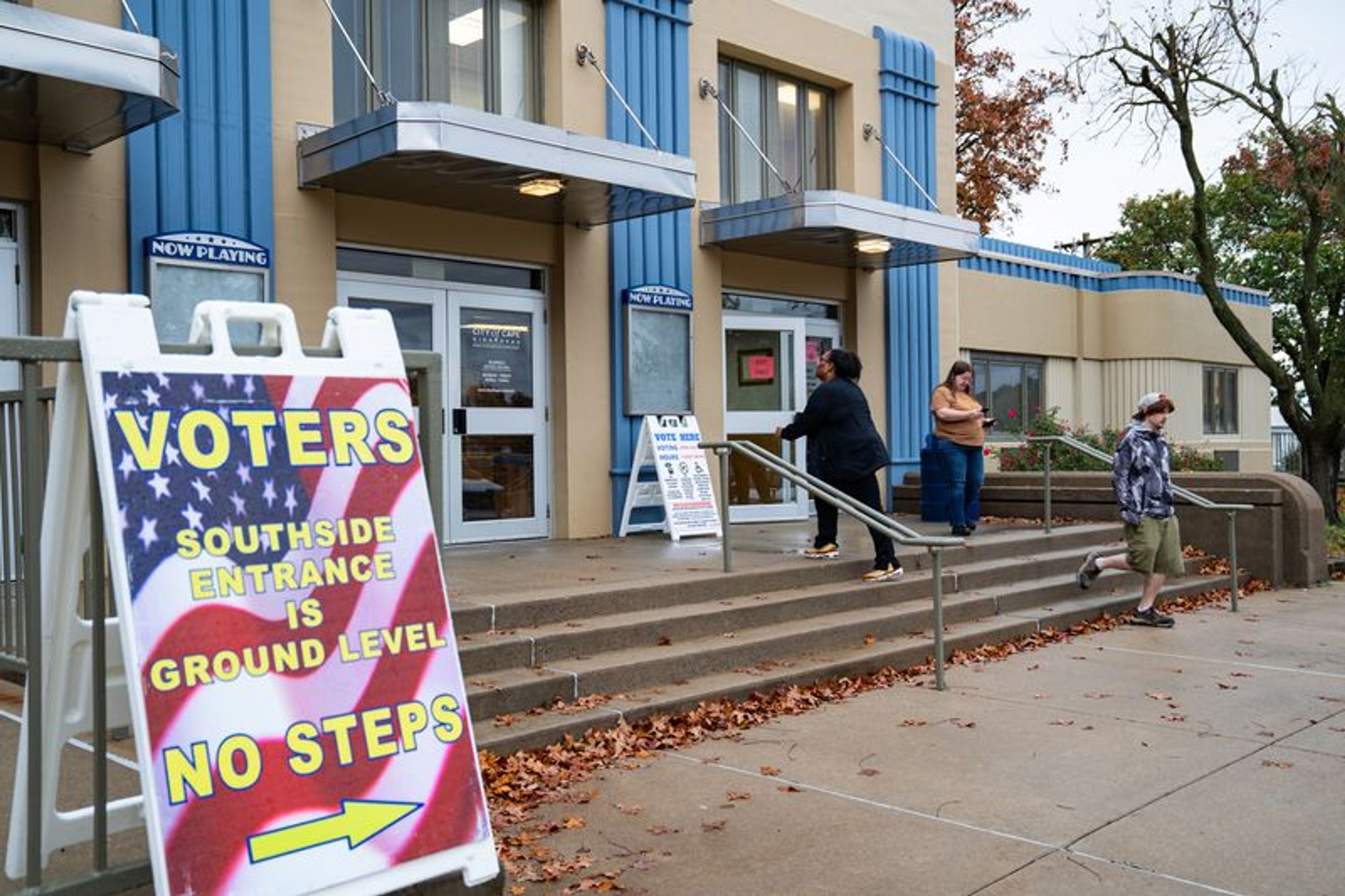Moody blues, Part I
St. Louis Post-Dispatch In the late 1990s, all the world looked rosy, and the crowd in Jefferson City had a bash. Money rolled in from income tax collections inflated by the stock market bubble. When people asked for tax cuts, they got them. Missouri cut sales and corporate franchise taxes to the tune of $600 million annually...
St. Louis Post-Dispatch
In the late 1990s, all the world looked rosy, and the crowd in Jefferson City had a bash.
Money rolled in from income tax collections inflated by the stock market bubble. When people asked for tax cuts, they got them. Missouri cut sales and corporate franchise taxes to the tune of $600 million annually.
When developers asked for tax credits, legislators turned on the money spigot. Missouri put 400,000 more children and adults on the Medicaid rolls. Lock-'em-up judges filled up the prisons and the state merrily built more. The state's school-aid formula was flying on automatic pilot, pushing school spending up by 13 percent a year.
Missouri took the Alfred E. Newman approach to financial planning; "What, me worry?" Careful observers knew the good times couldn't last, but nobody wanted to be a party-pooper .
Missouri government is now utterly pooped. Legislators and state officials are staggering around with a king-sized headache wondering how they'll plug a $1.1 billion hole in the budget, amounting to about 15 percent of state general spending.
State bean-counter-turned-lobbyist James Moody explains this woeful situation starkly, and well, in his new report on the state budget crisis, commissioned by the Missouri business community. "Missouri needs to recognize that there is no free lunch and nothing is going to come in the mail," he says. He puts his finger precisely on the problem. When reality pricked the stock market bubble, and the economic boom ended, Missouri found itself saddled with promises it could no longer keep.
In fact, those promises keep getting bigger. The state's mathematical formula for school aid called for a 13 percent increase this year. The state had 4 percent to 5 percent more prisoners to feed, and Missouri's Medicaid system added another 4,000 recipients. Tax credits for fixing-up old buildings had become an entitlement for developers, sucking $50 million out the Capitol door, with the figure due to grow.
Those tax credits are largely responsible for the spate of hotel construction and loft renovation that promise to make downtown St. Louis a lively place again. Medicaid health coverage eases human suffering, which is the highest purpose of government. But those programs are very expensive.
Meanwhile, state general tax collections were down 3 percent last fiscal year, in part because Missouri lost 109,000 jobs since the boom went bust in 2000. The state played a shell game for a couple of years, plugging holes with one-time money while liposuctioning its bureaucratic fat. This year, it borrowed nearly $400 million against future revenues - the equivalent of hocking the family silver. Now we're in a serious pickle.
And not even an improving economy will fix the problem, says Mr. Moody, who was state budget director under former Gov. John Ashcroft.
Mr. Moody is right. The tax-cuts of the 1990s will keep state revenue down and the bubble stock market probably won't return. But Mr. Moody is wrong about the solution - cut nearly every program by 15 percent. "This will not be a job for a budget manicurist, but rather a job for a budgeter wielding a machete," he wrote.
But what we'd end up with - bleeding stumps - would not be pretty. For instance, Missouri's cost-per-prisoner now ranks 47th among the states. Cut guards and we may get riots. Rather than that, Gov. Bob Holden's office says he'd have to release 5,500 inmates.
Missourians wouldn't want to cut subsidies for foster families, nor to let mentally ill people wander the streets. A House committee has already recommended dropping Medicaid health coverage for 80,000 children. Missourians are kind people; we want sick children to see doctors.
School aid has grown 26 percent over the past four years. "Common sense should tell us that Missouri cannot increase ongoing school funding by $800 million in a four-year period (and $2.73 billion total) when revenues are decreasing by $113.1 million during the same period," says Mr. Moody.
He's right again. School aid must be trimmed back. But a fat 15 percent chop could mean 5,000 fewer teachers, according to the governor. That's just too much.
Perhaps because he is a business lobbyist, Mr. Moody doesn't mention the "T" word. So let us bring it up: taxes. A better solution would combine higher taxes with spending cuts to reach an unhappy - but unavoidable - compromise. "There will be something . . . that virtually every advocacy or constituency group will hate," Mr. Moody writes. Right again.
Gov. Holden has suggested higher taxes on gambling and cigarettes. That's a great place to start. Voters almost approved higher cigarette taxes last year, before the budget crisis was in full bloom.
But Mr. Moody does have other good specific suggestions: A six-month freeze on tax credits, which cut state revenues by $220 million this year. The state grants credits for more than two dozen reasons, from training workers to cleaning up polluted land to fixing up old buildings. Some credits stimulate economic growth and some don't. The state needs time to sort them out.
Alternatives to prison for non-violent criminals in order to reduce the skyrocketing cost of jail.
Put more Medicaid recipients in managed care programs and require co-pays for those who can afford them.
Mr. Moody notes that the state gets a relative bargain with its program to cover children under Medicaid. The federal government picks up 72 percent of the cost. But he thinks the state should consider axing 3,000 disabled adults from the rolls - which would be both cruel and counterproductive.
State government insiders - experienced legislators, the governor and senior state officials - already understood the dismal mess facing the state. Mr. Moody's service is to bring that nasty knowledge to the state's business community, along with 90 freshman legislators. It ought to be required reading.
Tomorrow: Moody blues, Part II
Connect with the Southeast Missourian Newsroom:
For corrections to this story or other insights for the editor, click here. To submit a letter to the editor, click here. To learn about the Southeast Missourian’s AI Policy, click here.








